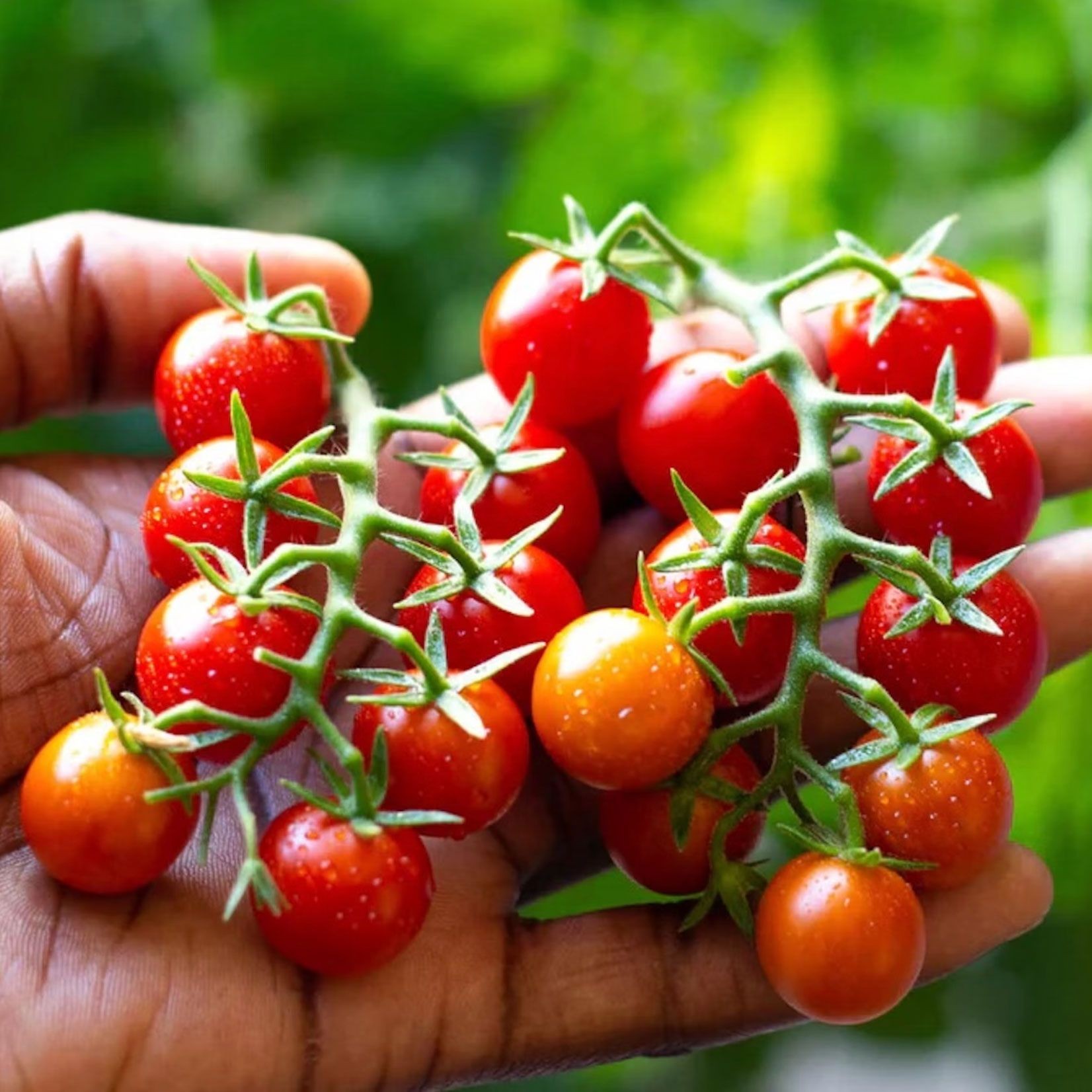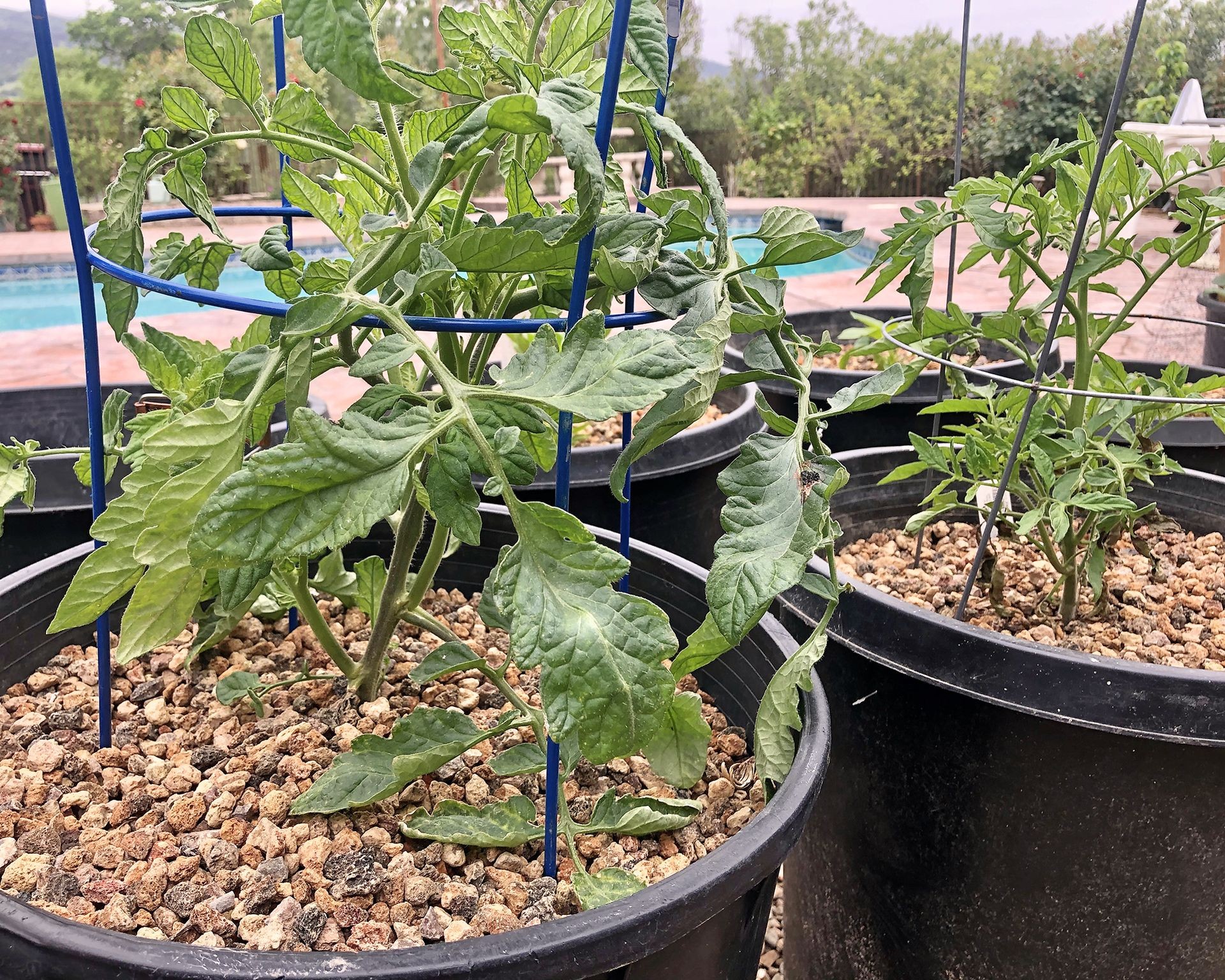No products in the cart.
NEWS
Determinate vs. Indeterminate Tomatoes: Choosing Your Best Harvest
Growing tomatoes is a favorite pastime for many gardeners, offering the reward of fresh, flavorful fruit right from the plant. With thousands of varieties available, selecting the right tomato can feel overwhelming. A crucial first step in narrowing down your choices involves understanding the fundamental difference in how tomato plants grow and produce fruit: are they determinate or indeterminate? Knowing these characteristics is key to successful cultivation, impacting everything from plant size and required support to when you’ll enjoy your harvest. For anyone starting their journey in growing tomatoes, grasping this distinction is essential for making informed decisions suited to their specific gardening space and goals.
Understanding the growth habit of a tomato plant before selecting varieties based on fruit size, color, or taste profiles is a foundational principle in effective gardening. This choice directly influences the space needed, the type of support required, and the timing and volume of your harvest. Whether you have a small patio, a raised bed, or ample garden space, the determinate or indeterminate nature of the tomato will dictate the best approach to care and cultivation, ultimately leading to a more successful and rewarding growing experience.
 Basket of vibrant red ripe tomatoes harvested from a home garden setup
Basket of vibrant red ripe tomatoes harvested from a home garden setup
Understanding the Growth Habits: Determinate vs. Indeterminate
The primary distinction between determinate and indeterminate tomatoes lies in their growth patterns and fruiting cycles. This fundamental difference dictates how the plants behave throughout the growing season and what kind of care they require.
Indeterminate tomatoes, often referred to as “vining” or “cordon” types, represent the majority of popular tomato varieties, including many beloved heirlooms. True to their name, these plants exhibit a continuous growth habit. They can reach impressive heights, often ranging from 6 to 20 feet (2 to 6 meters) or even more under optimal conditions. Their stems continue to lengthen and produce flowers and fruit as long as favorable growing conditions persist. This means you can expect a steady supply of tomatoes ripening over a prolonged period, typically from mid-summer until the first frost arrives. Because of their vigorous, sprawling growth, indeterminate tomatoes require substantial support structures like tall stakes, cages, or trellises to keep the heavy vines and fruit off the ground. Many gardeners prune the side shoots, or “suckers,” on indeterminate varieties to focus the plant’s energy into fewer, stronger main stems for potentially larger fruit, though this practice can vary.
Determinate tomatoes, on the other hand, are known for their “bushy” or “compact” growth habit. These varieties grow to a predetermined size, usually reaching heights of around 3 to 4 feet (about 1 meter). Their growth culminates when flowers and fruit set on the terminal buds (the tips of the stems). Once the plant sets this fruit, its upward and outward vegetative growth largely stops. This results in a shorter, more manageable plant. A key characteristic of determinate tomatoes is that they produce the majority of their fruit over a relatively short, concentrated period, often within a couple of weeks. The fruits tend to ripen earlier in the season compared to many indeterminate types. Determinate varieties generally require less robust support than indeterminate types, though some caging can still be beneficial to keep the fruit off the soil. Unlike indeterminate types, pruning side shoots on determinate tomatoes is generally not recommended, as it can significantly reduce the overall yield since fruit sets on these shoots.
Telling the Difference: Determinate or Indeterminate?
Identifying whether a tomato plant is determinate or indeterminate is usually straightforward if you have the right information, but there are also visual clues if the plant label is missing or unclear.
The most reliable source of information is often the seed packet or plant tag itself. Look for terms like “bush,” “compact,” or “determinate” to identify the determinate type. Conversely, if the label mentions “vining,” “cordon,” or “indeterminate,” you know you have a plant with continuous growth. Pay attention to the expected size; if it indicates a potential height of 6 feet or more, it’s almost certainly indeterminate.
If you don’t have access to the label, you can often tell by observing the plant’s growth pattern, particularly its height and flowering habit at the tips of its stems. As agricultural experts often note, a key indicator is the presence of flowers or developing fruit on the very tips of the main branches. If the growing tip ends in a cluster of flowers or fruit, it’s characteristic of a determinate plant, which stops growing upwards once it begins setting fruit heavily at the top. Indeterminate plants, however, will continue to produce vegetative growth at the tips, with flowers and fruit developing along the stem below the tip, allowing the vine to keep extending. While not foolproof for young plants, this tip-growth observation becomes more reliable as the plant matures.
Additionally, while not a definitive rule, most heirloom tomato varieties fall into the indeterminate category, known for their vigorous vines and season-long production. Only a smaller percentage of heirloom tomatoes are classified as determinate bush types.
Selecting the Ideal Type for Your Garden
Choosing between determinate and indeterminate tomatoes depends entirely on your gardening goals, available space, and how you plan to use the harvest. There isn’t one type that is inherently “better” than the other; the best choice is the one that fits your specific needs.
For gardeners with limited space, such as small patios, balconies, or compact raised beds, determinate tomatoes are often the superior choice. Their contained, bushy growth habit makes them highly suitable for growing in containers. They require less vertical space and less intensive support than their vining counterparts. Furthermore, because determinate varieties produce their fruit in a concentrated burst, they are ideal if you plan to process a large batch of tomatoes for canning, sauces, or freezing. This “glut” of fruit makes cooking and preserving much more efficient. Determinate types also tend to ripen earlier, which is a significant advantage in regions with shorter growing seasons.
Indeterminate tomatoes are the go-to choice if your priority is a steady supply of fresh tomatoes for slicing into sandwiches, adding to salads, or snacking on throughout the entire growing season. Their continuous fruiting means you can harvest ripe tomatoes regularly for months. However, they demand more space, particularly vertical space, to accommodate their extensive vining growth. Adequate staking, caging, or trellising is crucial to support the plant’s height and fruit load, preventing disease and making harvesting easier. While they can be grown in large containers, they still require significant support structures. The ongoing nature of their production might also mean slightly more consistent attention to watering, feeding, and pruning throughout the season.
 Indeterminate tomato plants growing in large containers, supported by sturdy cages
Indeterminate tomato plants growing in large containers, supported by sturdy cages
What About Semi-Determinate Tomatoes?
As plant breeders continue to develop new tomato varieties, they sometimes create types that don’t fit neatly into the traditional determinate or indeterminate categories. This has led to the informal classification of semi-determinate tomatoes.
Semi-determinate varieties represent a hybrid growth habit. They typically grow taller than most determinate bush types but remain more restrained and less sprawling than full indeterminate vines. They might reach heights of 4 to 5 feet. Like indeterminate tomatoes, they tend to produce fruit over a longer period throughout the growing season, rather than all at once like determinate types. This makes them a good compromise for gardeners who want a continuous harvest but have slightly less space or prefer a plant that’s more manageable than a truly vigorous indeterminate vine. They still benefit from support, though perhaps not as tall or robust as that required for the largest indeterminate varieties.
Examples of Popular Determinate and Indeterminate Varieties
Understanding the classification helps when exploring specific tomato varieties. While the vast selection can still be daunting, knowing the growth habit helps you narrow down the options that will thrive in your garden setup.
Most indeterminate varieties are valued for their extended harvest and often complex flavors. This group includes the majority of heirloom tomatoes. Popular indeterminate types include Beefsteak varieties (known for their large slicing tomatoes), most Cherry tomatoes (providing abundant small fruits), Black Krim, Apero cherry, Beefmaster, Brandywine, Green Zebra, Gurney’s Girl, Yellow Pear, San Marzano (often used for sauces, though vining), Better Boy, and Early Girl (a classic early producer).
Determinate varieties are favored for their space-saving nature and suitability for batch processing. Many popular paste or plum tomatoes fall into this category, such as Roma. Other well-known determinate tomatoes include Bush Early Girl, Rosella Purple, and various dwarf varieties specifically bred for containers or small spaces, like Tasmanian Chocolate or micro-dwarfs such as Red Robin, Patio Yellow, and Tiny Tim.
Semi-determinate varieties offer a middle ground. Examples often cited include Celebrity, Ace, Alaskan Fancy, Seiger, Ten Fingers of Naples, and Piennolo del Vesuvio tomatoes.
Essential Care Differences
The distinct growth habits of determinate and indeterminate tomatoes also influence their care requirements, particularly regarding support and pruning.
Indeterminate tomatoes, with their continuous vining growth, absolutely require robust support from an early stage. Staking, caging, or trellising should be implemented when the plants are still young to train their growth upwards and prevent vines from collapsing or spreading along the ground. Pruning side shoots (“suckers”) is a common practice to manage their size and potentially increase fruit quality, though it’s an optional technique depending on the gardener’s preference and desired yield versus fruit size. Consistent feeding and watering are also important to sustain their long fruiting period.
Determinate tomatoes need less intensive support due to their bushy structure, though a cage or short stake is still helpful to keep fruit off the soil, especially when heavy with ripening tomatoes. Crucially, determinate varieties should not be pruned heavily. Removing side shoots will significantly reduce the potential yield, as the plant’s total fruit production is set on these branches. Their concentrated fruiting period means they might benefit from a good supply of nutrients early on to support the development of all the fruit that will ripen within a few weeks.
In conclusion, selecting the right type of tomato plant – determinate or indeterminate – is a foundational decision that sets the stage for your gardening success. By considering your available space, the length of your growing season, and how you plan to use your tomato harvest, you can choose the varieties best suited to your needs. Whether you aim for a single, abundant harvest for canning or a continuous supply for fresh eating, understanding these growth habits empowers you to make the best choices for a productive and enjoyable tomato season. At Biogarden.asia, we understand the nuances of plant growth and offer a range of high-quality seeds and gardening supplies tailored to help you succeed with both determinate and indeterminate varieties. Explore our selection to find the perfect tomatoes and the support products you need to cultivate your best harvest yet.



